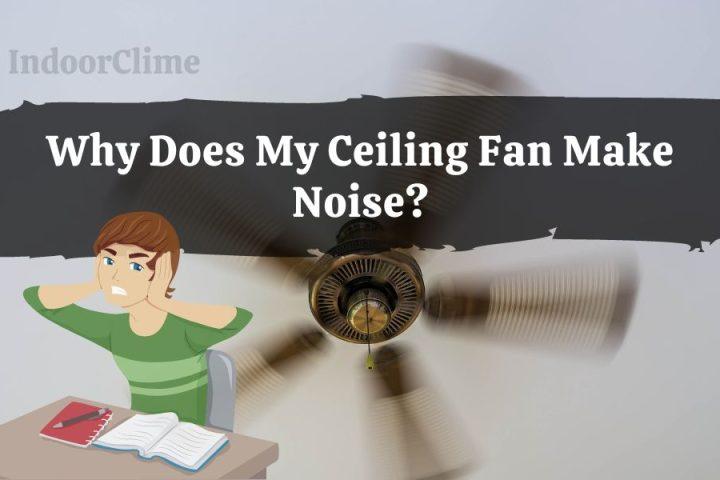The light bulb wattage should perfectly match your ceiling fan, your objective (energy efficiency), and the environment.
36 to 56-inch ceiling fans typically use 55 to 100-watt bulbs. For instance, a 48-inch ceiling fan requires a 75W bulb.
What Light Bulbs Work With Ceiling Fans? (Do I Need Special Bulbs For the Ceiling Fan?)
Replacing or upgrading a ceiling fan light bulb can be confusing because not all use the same ones. Bulb alternatives manufacturers use vary in size, color, and other characteristics.
The wrong size will not fit into your ceiling fan. Thus, it will be a complete financial waste. Therefore, it is crucial to make the correct product investment.
You don’t necessarily need special bulbs for your ceiling fan. Regular bulbs function perfectly, but one should consider their maximum wattage and socket size to be safe.
Before making a purchase, be sure the bulb offers the required lumen counts and that it does so.
Here are the best bulbs to choose from for your ceiling fan:
1. Comzler LED Ceiling Fan Light Bulb
Comzler is one of the first to produce light bulbs and other accessories. Their products are frequently highly durable and last long without any problems.
This list’s top spot is taken by the Comzler ceiling fan light bulb pack, which offers the most trustworthy and durable lights on the market. There are six in the light pack, which is a respectable number. Each ceiling fan light bulb uses an E12 socket for optimal compatibility.
The total wattage or powering rating is 60 watts for the performance data. The bulb’s 5500k color temperature is now operational. However, their best quality is the 5-year warranty of these ceiling fan light bulbs.
2. Shinestar E12 LED Ceiling Fan Light Bulb
This bulb reportedly has a 60-watt rating and provides a good level of brightness. The color temperature of these lights is 5500K as well.
A 3-year warranty is also included, more than you may anticipate from a performance ceiling fan light bulb manufacturer.
3. Cotanic Ceiling Fan Light Bulb
As the least expensive option in this article, this Cotanic ceiling fan light bulb pack is ranked third.
This lamp has an E26 socket. These lights have a high wattage rating of 60 watts and a 4000K color temperature.
4. Hansang Store E12 Candelabra LED Ceiling Fan Light Bulb
It offers cozy illumination with a CRI of 80 or above (color rendering index). They provide calming daylight to provide a colorful, realistic-looking atmosphere.
These lights don’t have any blue light and are glare-free. It assures that the lighting in your space will be completely different. They feature 600 lumens, guaranteeing a cozy atmosphere without flickering, humming, or dazzling.
It doesn’t have any IR, UV, or mercury. Thus, it successfully safeguards your vision. Moreover, replacing them is rarely necessary since they last roughly 30,000 hours.
They can be used as decorative wall scones, chandeliers, pendants, foyers, and other domestic lighting fixtures.
5. Dekang Ceiling Fan Light Bulb
It is suitable for an E12 socket, has a power rating of 60 Watts, and has a 5,000K color temperature.
How Can I Know What Size Light Bulb I Need?
To establish the size and type of the existing ceiling fan bulb, measure the light bulb’s base. Ceiling fans typically use one of four light bulbs: candelabra, mini candelabra, intermediate, or medium.
Here, candelabra and intermediate bulbs are frequently utilized, whereas modern ceiling fans use tiny candelabra, and older ceiling fans use medium-light bulb fittings.
Can I Put a Higher Watt LED Bulb In a Ceiling Fan? (For Example, a 60-Watt LED Bulb On a 40-Watt?)

Yes, you can switch out an LED bulb for one with a higher watt equivalent if the LED bulb uses less power than the fixture. Several values (wattages) are commonly needed to operate ceiling fans.
The “60-watt LED equivalent” on a label does not always mean the LED bulb consumes 60 watts. Instead, it suggests that the bulb’s light is comparable to a 60-watt incandescent bulb.
When a fixture warns against exceeding a certain Watt limit, it warns against the risks associated with incandescent bulbs’ high heat production. But LED light bulbs produce less heat than incandescent bulbs.
So, even if the socket specifies “not to exceed 60 watts,” you might install a 100-watt equivalent LED light bulb without risk. A high-wattage LED might not be appropriate for enclosed installations, so bear that in mind.
For instance, if you put a 14W LED bulb, which has an equivalent power of 100W, in a 40W fixture, the light bulb is very likely to burn out quickly.
How Many Watts Is a Ceiling Fan Light?
Older incandescent light bulbs, frequently used in ceiling fans, require 50–100+ power, while more recent LED light bulbs only need 10–20 watts.
A ceiling fan with an integrated light is a convenient feature that can help you avoid paying extra for additional lighting in your space.
How Do I Make My Ceiling Fan Light Brighter?

Here are the things that you can do to make your ceiling fan light brighter:
1. Utilizing the Remote Control To Adjust the Light
Consider the installation of a ceiling fan with remote control. The problem with the low bulb brightness can be fixed by pressing a button.
Using the remote control that came with the ceiling fan, you can adjust the brightness of the built-in light bulb. Manufacturers frequently fail to mention the remote control in the instruction manual.
You may adjust the lightbulb’s brightness by pressing and holding the light button on the fan’s built-in remote control. You might need to fiddle with the switch if this step does not cure the problem. If not, make sure the light wire is correctly attached.
2. Control the Brightness
There are ceiling fans with controls that are preprogrammed. For example, the bulb’s brightness has probably been programmed. If you have this fan, you can adjust the controls to make the bulb brighter.
3. Connect a New Bulb
If the two techniques above do not help you, the bulb’s brightness might already be at its highest. In this situation, a replacement bulb can be used in its place. If the fan is coupled with a light bulb, it uses more energy and is less clear.
The maximum bulb power for the majority of ceiling fans is 40 W. However, there is no need for concern. There are light bulbs on the market.
These lights are brighter and use less electricity. We advise using LED lighting. LED bulbs have a higher luminous flux, and this is our requirement.
4. Remove the Power Limiter
A little black box with a few ceiling fans is the current limiter, also known as the power limiter. It is attached to a fan to reduce excessive power and keep the overall power at no more than 190W.
If a power limiter is put in the fan, it will lessen the brightness of the light. Therefore, the power limiter won’t be employed when the bulb’s luminous flux is lower, so take the black box out in such an instance.
Consult an electrician before removing the current limiter for safety concerns.
Most people consider flashing or dim lights a nuisance caused by bad connections or defective light bulbs. Your lights may dim for several different electrical reasons, but the most frequent is a sudden rise in the load on your circuit.
5. Replace Your Light Bulb/s
Seek for lights with higher lumen output or warmer color temperatures. One must confirm this prerequisite to ascertain their kelvin level (color brightness). A light bulb with a higher CRI also improves visibility in your area.
Usually, a luminaire with a light bulb is used to illuminate a ceiling fan. Swap out the current bulb for fluorescent lighting to make the ceiling fan brighter.
Fluorescent lighting generates brighter light using less electricity than a standard light bulb. Fluorescent bulbs are available at the same hardware or home improvement store where you bought the ceiling fan.
Use the same household tools you did to install the fluorescent lamp.










